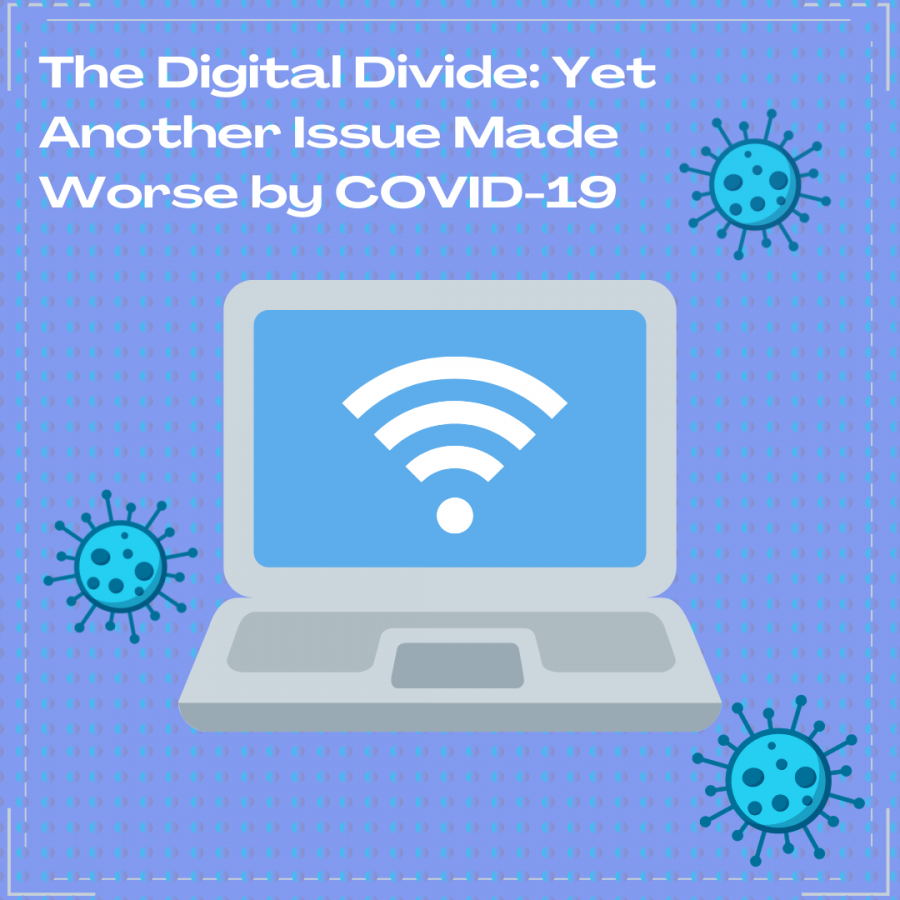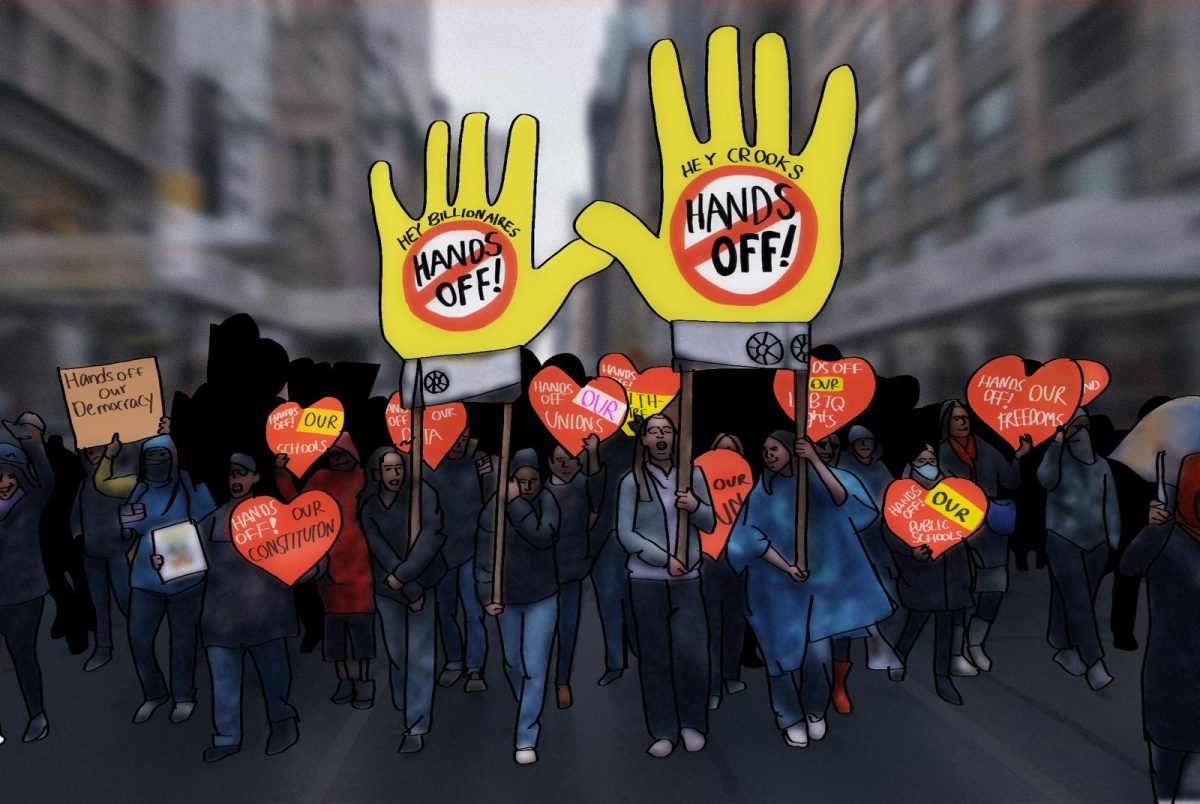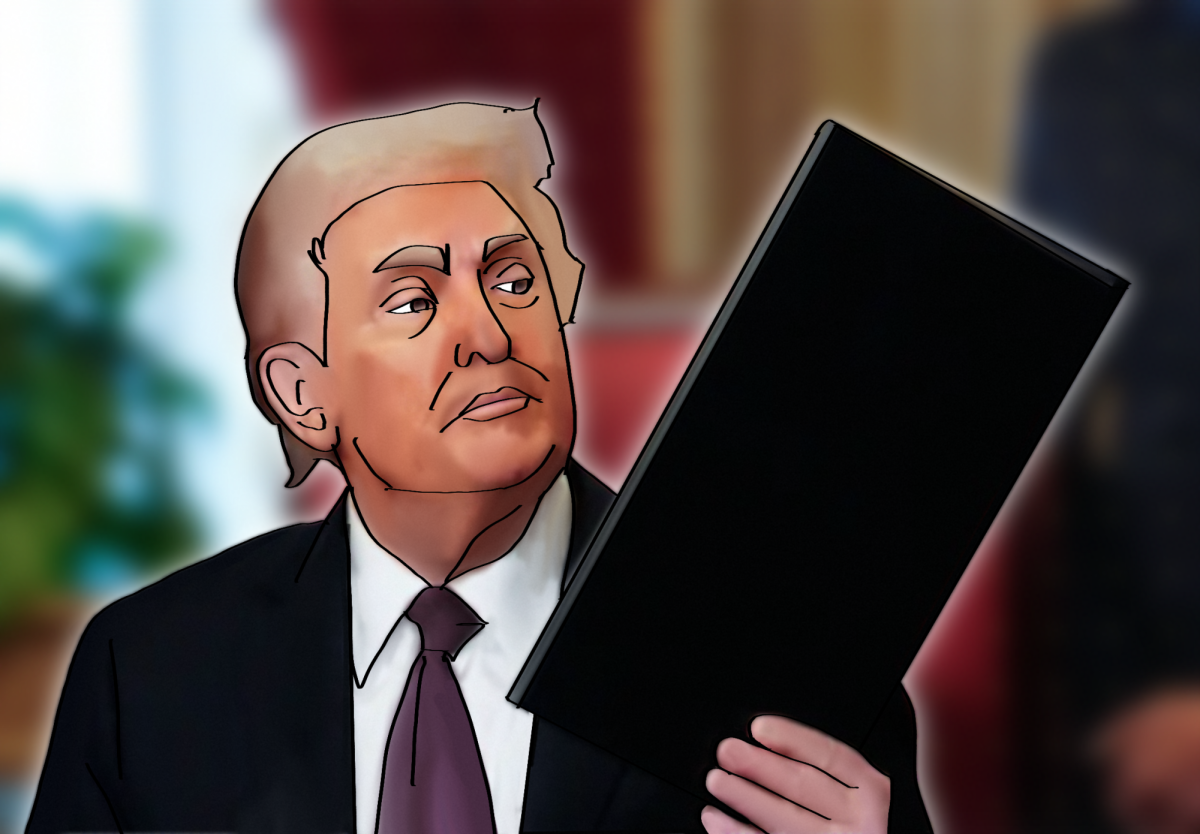COVID-19 Widens the Digital Divide
With the onset of COVID-19, school, like many other parts of daily life has been moved to a virtual setting. However, lack of high-speed internet and adequate devices has left many students struggling.
Oct 26, 2020
In this day and age, technology and internet access have become a critical part of daily life. Today, technology is no longer simply a privilege, it is a necessity. The need for internet access has only become greater with the onset of COVID-19 forcing a transition to remote learning. However, for many students around the globe, this transition has been difficult not only because it is new, but because of the absence of internet access that has become so crucial in these times. While the digital divide is not a new issue, this problem has only been exacerbated by the recent changes that have been made in order to adapt to the Coronavirus.
This digital divide refers to the disparity between the privileged and underprivileged in terms of access to high-speed internet or a computer. This issue is especially prominent among lower economic classes, racial minorities and those living in rural areas.
This problem is, unfortunately, not a new one. Even without the pandemic, the need for efficient internet access in this increasingly technological world is undeniable, yet many struggle with meeting this requirement. The pandemic has only heightened this problem, which is yet to be resolved despite bipartisan agreement that something must be done. The complication of education during this crisis raises concerns as racial minorities and low-income students, an already marginalized class of people, stand to lose the most from being forced to attend school virtually.
“The digital divide is growing to be a serious issue. Within a few years, the gap between those with access to such technology and those who, unfortunately, cannot use technology will grow. As we become more and more reliant on technology, those people will be more affected,” sophomore Elijah Cima said.
The digital divide has been especially problematic with the Coronavirus forcing school, among many other things, to be moved to a virtual setting. Without a computer or high speed internet, education becomes severely limited for the disadvantaged.
To those in positions of privilege, the divide may seem like one experienced by few. However, it affects millions of kids all over the world, even in developed countries like the United States. Studies done by the United Nations International Children’s Emergency Fund have shown that out of a peak of 1.5 billion students completing their schooling online, 463 million lack internet, television or radio access.
“With the context of online learning, the digital divide is currently as relevant as ever, as disenfranchised students are unable to have good connections to their class Zoom calls and have difficulty with interacting with software such as Teams and Google classes due to their poor internet quality,” sophomore William Hudson said.
Students have been forced to use devices that are shared with the rest of their family or are left to resort to completing assignments on devices that are inadequate for schooling purposes, such as cellphones. Many of these students with limited internet access cannot easily communicate with their teachers either, which limits their ability to ask questions. Students facing these difficulties often have to resolve their problems themselves or have to rely on the limited help of their families.
In some countries, these new obstacles are causing an increase in dropouts. For example, in Peru, high school dropout rates have risen 6.1 percent in the last year. These struggles could also potentially force underprivileged students to prematurely return to physical school in order to avoid technological issues. This could put them at greater risk of contracting the virus.
With the lack of a national plan in the United States, individual school districts have attempted to mend this issue themselves. Their solutions include providing students with subsidized or low-cost Wi-Fi and devices. However, these makeshift solutions are often costly and not scalable.
Additionally, due to an unfortunate lack of federal support and funding, many districts, especially rural ones, are simply unable to provide every student with Wi-Fi and a device. Certain areas where students live simply lack the infrastructure to be able to install the equipment necessary for high-speed internet. This has led to many students turning to study in the parking lots of schools, libraries and restaurants for internet access.
However, the light this pandemic has shined on the digital divide has given many hope that this technological disparity will be bridged sooner thanks to increased attention. As individuals strive to quickly find solutions for the problems posed by the digital divide when it comes to online education, progress is made towards finding a way to minimize the gap. And hopefully, these solutions can continue to reduce the separation even after the pandemic ends and normalcy resumes.
Despite its consequences, there are already potential solutions to this modern dilemma. The Federal Communications Commission is currently running a program that helps to subsidize the cost of internet service for schools and libraries, but this program is insufficient in helping students learn from home. The overwhelmingly Republican panel is doing little to solve this problem as its chairman, Ajit Pai, insists the money can only be used for campuses and not homes and claims to not be able to change this rule. Another potential solution is to expand Coronavirus relief packages to include K-12 schools, but so far, President Trump has indicated no plan to do so.
The digital divide is a serious hindrance to the computer-centric society that exists today, and the pandemic has only drawn greater attention to this issue. These struggles are still a grave concern all around the world, possibly even in the Gables community, that, unfortunately, has yet to be solved.











